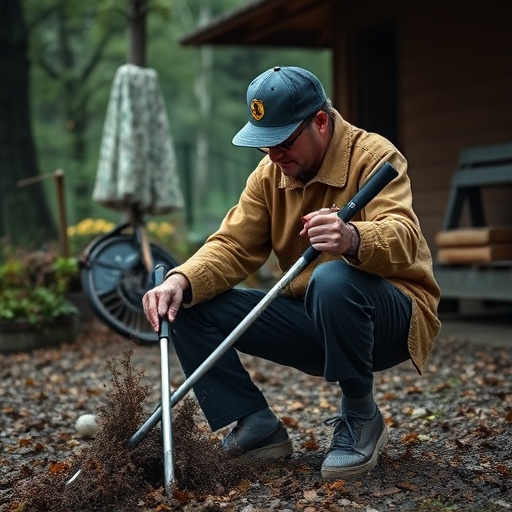The Kubotan, a compact self-defense tool derived from the Japanese 'cube', is gaining global popularity for its discreet carry and versatility. Effective use requires mastering basic grip positions, understanding pressure point techniques, and leveraging the tool's range rather than just striking. Regular training with an instructor is vital to develop muscle memory in basic stances, grips, and joint manipulation while maintaining safe distances from partners. Learning Kubotan techniques boosts confidence and situational awareness for personal safety in various situations.
Discover the power of self-defense with the versatile Kubotan—a compact, multi-purpose tool with ancient roots. This article delves into the history and techniques behind this unique weapon, offering insights for those seeking effective personal safety. Learn about various Kubotan self-defense moves, their practical applications, and essential training tips to master this handy defense mechanism. Explore how to leverage its small size and multiple tools to deter threats and gain confidence in your ability to protect yourself.
What is a Kubotan and Its History
A Kubotan is a small, handheld self-defense tool that has gained popularity for its compact size and versatility. Derived from the Japanese word “kubo” meaning “cube,” this device appears as a small metal or plastic cube with a chain attached to one side. Its origins can be traced back to Japan, where it was initially designed as a key chain for security purposes, offering a discreet means of personal protection. Over time, the Kubotan evolved into a specialized self-defense weapon, leveraging its compact form factor and unique design to provide users with effective tools for deterring potential attackers.
The versatility of a Kubotan lies in its ability to be used discreetly, allowing individuals to carry it without raising suspicion. Its small size makes it easy to conceal within pockets or purses, ensuring accessibility when needed most. When faced with a threatening situation, the Kubotan can be employed through various techniques that focus on pressure points and quick strikes. Learning how to use a Kubotan involves mastering basic grip positions and understanding the principles behind its application, enabling users to defend themselves effectively in close-quarters encounters.
Understanding Kubotan Self-Defense Techniques
Kubotan self-defense techniques are designed to empower individuals with simple yet effective tools for personal safety. At its core, understanding how to use a kubotan involves mastering basic grip positions and utilizing it as a leverage point rather than just a striking instrument. The small, cylindrical tool is easily concealed, making it an ideal self-defense mechanism for everyday situations.
Learning the right techniques allows users to apply pressure on sensitive areas of an attacker’s body, disarming them or creating an opportunity to escape. Training in kubotan use should focus on developing precision and control, ensuring that every move has a purpose. By understanding how to use a kubotan effectively, individuals can boost their confidence and peace of mind in potentially dangerous environments.
Practical Applications and Training Tips for Kubotan
The Kubotan, a compact self-defense tool, offers practical applications for individuals seeking to enhance their personal safety in various situations. Its unique design and size make it easy to conceal and carry, providing users with a sense of empowerment and confidence. Whether you’re a student, professional, or anyone looking to improve their situational awareness, learning how to use a Kubotan effectively can be a valuable skill.
Training tips for mastering Kubotan techniques include focusing on proper hand placement, understanding the tool’s range, and practicing efficient strikes. Imagine situations where you might need it—public transport, walks home at night, or even in an office setting. Regular practice with a trained instructor is crucial to developing muscle memory and ensuring safety. Start with basic stances and grips, then progress to more advanced moves like pressure points and joint manipulation, all while maintaining a safe distance from training partners.
